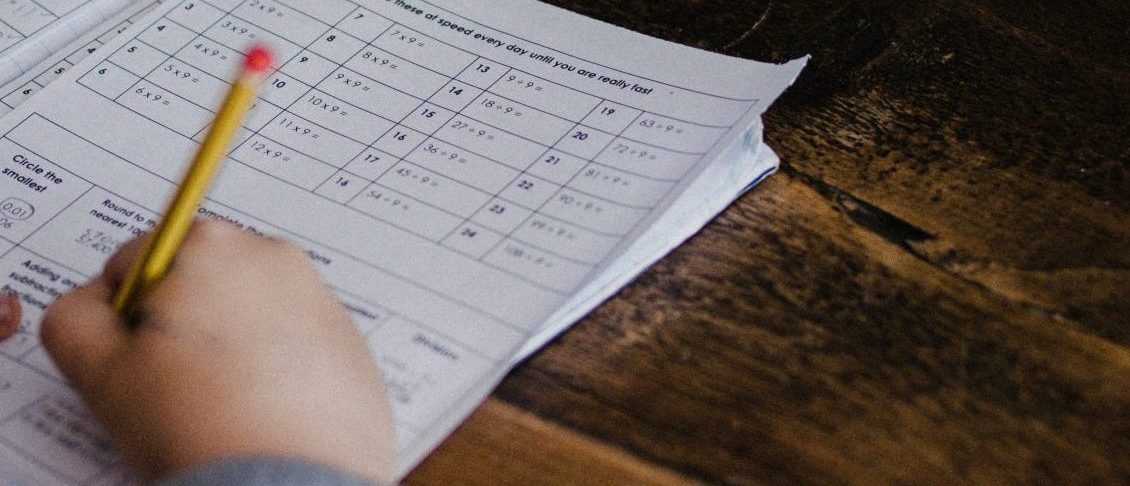As any educator can tell you, homework is a highly contentious topic. There are questions surrounding its general necessity and value, as well as its specific structure, content, and quantity. How early should students start doing homework? How many nights a week? Should family members help their children or take a more hands-off approach? These questions have been discussed at length at conferences and in articles (here, here, and here, for just a few examples), and for good reason.
I can still picture myself crying over a math worksheet at the kitchen table, arguing with my father that the teacher had said I had to do multiplication a certain way. Explaining that I needed to complete the set of thirty-some questions by the next morning without opportunities to get help or gain additional understanding.
Despite the many questions surrounding homework, one thing is certain: homework must be structured with the same intention as classroom learning if it is to be of value. Otherwise, we are asking students to complete activities merely for the repetition of process and not the learning, which can foster both frustration and feelings of low self-esteem.
Stanford researcher Denise Pope recently conducted research on the pitfalls of homework, delineating the danger of repetitive busywork. She writes, “Rather, any homework assigned should have a purpose and benefit, and it should be designed to cultivate learning and development.” (Learn more at Challenge Success, a non-profit associated with Stanford’s Graduate School of Education). While many educators have banished the repetitive worksheets and rote memorization of skill-based teaching from the classroom, these practices frequently rear their ugly heads in the form of take-home work.
The Understanding by Design (UbD) model employs backwards design to support student understanding, buy-in, and growth. Let’s banish rote-based worksheets for good and explore how utilizing backward design in homework planning truly benefits our students.
A Case for Collaboration
When I worked in a fourth grade classroom, homework was a big topic of discussion. Students and their families alike felt the impending pressures of middle school and its infamous increase in workload. The desire for scaffolded structure to build independent at-home learning practices was palpable. Fortunately, I worked with a team of experienced and intentional educators who were up to the task.
At our school, fourth grade was the first year students rotated between teachers for math, English, and social studies. This differentiation of subjects alone triggered anxiety regarding homework. Students worried they would have homework for each subject and become overwhelmed with the workload. To mitigate this panic, we teamed up to create collaborative homework connecting the subjects.
As always with the UbD model, our intention was to replicate experiences outside of the classroom. By creating homework projects that integrate learnings from each subject, students are exposed to deeper critical thinking. Rarely in adult life are we given problems to solve that are purely subject-specific. An architect may use their mathematical skills to model a building, while also leaning upon their understanding of historical design and their language tools to write a compelling pitch. If subjects are so infrequently differentiated within the “real world,” why should the classroom be any different?
Bidding Farewell to Nightly Worksheets Good-Bye
Once the decision was made to collaborate between subjects, the fourth grade team began by identifying desired outcomes from students. While each individual classroom (and thus, homework) unit involves specific understandings and outcomes, it was crucial to begin with an even broader picture. What did we want students to get out of the general practice of homework? For us, these desired outcomes fell into two categories:
- Self-awareness: Students will be able to independently reflect on and implement structures that best support their at-home learning. This might look like:
- creating a schedule or timeline for their assignment to best support success
- designating a homework location
- reaching out for teacher support in advance during the school day
- Depth of Understanding: Students will be able to discuss, reflect upon, and apply understandings more deeply from independent exploration of concepts introduced in the classroom. This might look like:
- independently researching a classroom topic and presenting it to the class
- applying knowledge from the classroom to individualized reflections at home
- discussing learnings with a family member or friend
With these intentions in mind, it was decided to shift from the practice of nightly homework, to weekly homework packets. These packets were handed out on Tuesdays and turned in the following week. They focused heavily on project-based learning assignments involving a range of subjects. Additionally, students were invited to come to school fifteen minutes early for a daily homework period to ask questions.
This homework method reflected our desired outcomes of self-awareness and depth of understanding in a multitude of ways. By giving students an entire week to complete a homework assignment, we scaffolded the tools of prioritization, timeliness, and organization. If students waited until the night before the packet was due to complete the entire assignment, they had to work many hours in one night. This led them to the understanding that parsing out an assignment bit by bit over the week yielded less stress and better results.
Additionally, by providing students with project-based learning packets that reflected in-class teachings, students were asked to independently grapple with topics before demonstrating their understandings through cumulative assessment. As we continued to explore topics relating to the homework packet throughout the week (as well as provided space for teacher help), students were able to add to their assignments daily as their understanding deepened.
An Example from My Own Classroom
For a brief example of a homework packet, allow me to bring back the example of an architect. One week, students became architects themselves and brainstormed a new building for the school campus. As we were studying the topic of area in math class, the project focused on mathematical calculations of the building and mapping it out in cubic feet.
But the packet was not solely mathematical. In addition to the dimensions of the building, students were asked to pitch the necessity for this space within the campus in a reflective essay. What benefits would it bring to the school? Why was it necessary? This fits nicely with a writing unit on persuasive writing. Students were also asked to create a visual demonstration of their building to enhance their creative engagement. They then shared their work with the class, just as a real architect might.
For innovative ideas and examples related to project-based learning, check out my “Game On” series, this article by Grant Wiggins, and resources from Edutopia and PBL Works!
Why it Matters
By using the UbD framework to ground our intentions with homework, the fourth grade team was able to strategize a framework that scaffolded independent work practices and deepened student understanding. While this does not answer all discussions of the necessity of homework, it does provide a structure to promote intention within the practice.
And if these reasons alone aren’t convincing enough, the added benefit of preparing one single homework packet for the week (instead of daily printing!) may be just the thing to push teachers over the edge.



No responses yet